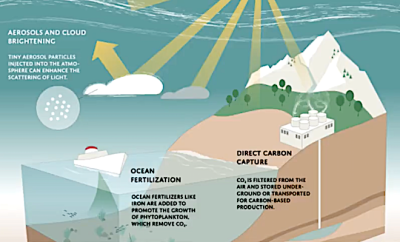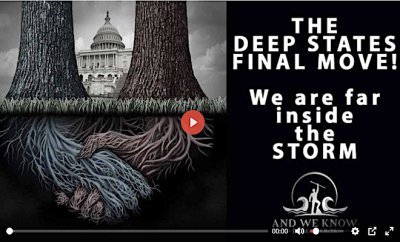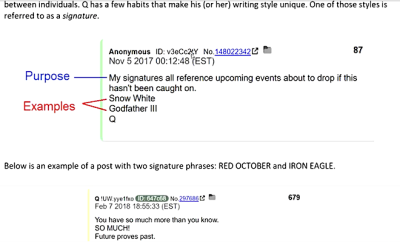
Geo Watch
ELE: Global CO2 Rise Is Changing Ocean Chemistry & Killing Sea Life
EDITOR’S NOTE: Posting this article is no endorsement of any UN global warming or carbon tax agenda. In fact, it is a direct indictment of the Geoenginnering and climate modification programs which have contributed to the very destruction of ecosystems and earth’s life support systems. As Geoengineeering Watch’s Dane Wigington has warned, “If we don’t end these programs, if we do nothing, it’s over. We die.”
EXTINCTION LEVEL EVENT: Global CO2 Rise Is Changing Ocean Chemistry and Killing Marine Creatures, While Rising Ocean Temperatures Are Killing Great Barrier Reef Coral.
by Linda Moulton Howe, Earthfiles.com:
“I was shocked: most of the coral in the Great Barrier Reef is dead or dying.” – James Woodford, The Guardian, April 16, 2016
“Imagine if you were living along the East Coast of the U. S. or on the Atlantic Coast of Europe and all of a sudden 95% of the seawalls on that entire coast crumbled into dust?! That is what just happened on the Great Barrier Reef.” – Stephen Palumbi, Ph.D., Prof. of Biology and Dir., Hopkins Marine Station, Stanford Univ., Monterey, CA

2016 National Coral Bleaching Taskforce reports 95% of the
Great Barrier Reef is now severely bleached and is calling for the
once-vibrant reef to be formally listed as in danger of
complete die-off. Image by The Guardian.

See Websites below for “Our Changing Climate,” U.K. Meet Office Hadley Centre.
April 29, 2016 Monterey, California – On April 22, 2016, something happened that’s never been seen before. It was Earth Day and never have so many countries signed an agreement at once as 175 countries did on opening day to sign the Paris Agreement to fight the relentless rise in global air and ocean temperatures. Even North Korea signed.
The nations that did not sign the agreement on April 22nd have one year to do so. China, the world’s top carbon dioxide emitter, announced its intention to “finalize domestic procedures” to ratify the Paris agreement before the gathering of the G-20 summit in China five months from now in September. The second largest CO2 emitter, the United States — represented by Secretary of State John Kerry — pledged to ratify the Paris Agreement this year and so did the 28-nation European Union along with Canadian Prime Minister Justin Trudeau and leaders of Mexico and Australia.
As CO2 continues to increase from a variety of sources, temperature data around the world through 2015 showed that the average global temperature on Earth has climbed at least 1.02 degrees Celsius, which is half way to the dangerous threshold of 2 degrees Celsius that if reached this century, could mean ice melting faster in Arctic, Greenland and Antarctic. That would mean faster rising sea levels and threats to many life forms from the oceans to islands to land.
And warming ocean waters are killing corals. The U. K.’s Guardian headlined on April 16, 2016, “I was shocked: most of the coral in the Great Barrier Reef is dead or dying.” The writer was James Woodford, who does science reporting from the field for The Guardian.He described his firsthand trip along the Great Barrier Reef. He wrote, “What I was seeing beneath me was evidence of an environmental disaster that has been unfolding over the past few months — the largest mass coral bleaching event ever recorded in this region.”

During March 2016 coral bleaching survey of several hundred Great Barrier reefs,
the fringing reefs in the Torres Strait are completely bleached white.
Image by Prof. Terry Hughes.
In April, the U. K.’s National Coral Bleaching Taskforce reported that 95% of the Great Barrier Reef is now severely bleached and should be placed on the endangered species list. Without the massive coral reefs, an untold number of other marine life will have to move somewhere else or perish.
Not only is CO2 in the atmosphere causing a global warming problem, but the gas has been absorbed by the Earth’s oceans in great quantities the past few decades. Without that enormous absorption, the Earth would already be much warmer. But all that CO2 absorption in the waters is changing ocean chemistry that can kill marine creatures such as oysters. On April 4, 2016, Oregon State University news headlined that “the ocean chemistry along the West Coast of North America is changing rapidly because of global carbon dioxide emissions … and the oyster industry is confronted with high mortality rates of juvenile oysters because of increasingly acidified water.”

This image shows 1-day old Pacific oyster larvae from the same parents, raised by
the Taylors Shellfish Hatchery in natural waters of Dabob Bay, Wash. The larva on
the left was reared in favorable carbonate chemistry; on the right in unfavorable chemistry.
The waters were not manipulated and differences in the chemistry were accounted
for by shallow and deep water intake pipes at the hatchery. The 0.1 mm scale
bar is about the diameter of a human hair. Image courtesy of George Waldbusser
and Elizabeth Brunner, Oregon State University.
One man who has devoted his life and career to understanding and protecting marine organisms is Stephen Palumbi, Ph.D., Professor of Biology and Director, Hopkins Marine Station, Stanford University, Monterey, California. Recently in an Earthfiles interview, he explained why oysters and the Great Barrier Reef are having such a hard time staying alive.
READ MORE & LISTEN NOW @ Earthfiles.com
RELATED:
IF WE DON’T STOP THIS, WE’RE DEAD

















